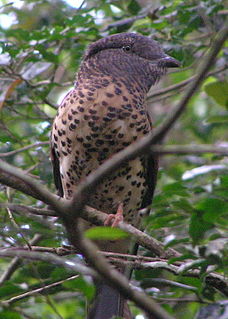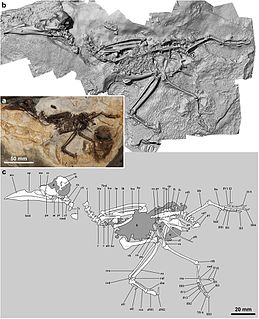 W
WThe Coraciiformes are a group of usually colorful birds including the kingfishers, the bee-eaters, the rollers, the motmots, and the todies. They generally have syndactyly, with three forward-pointing toes, though in many kingfishers one of these is missing.
 W
WThe cuckoo roller or courol is the only bird in the family Leptosomidae, which was previously often placed in the order Coraciiformes but is now placed in its own order Leptosomiformes. Its nearest relative is not clear. Morphological evidence may suggest a placement in or near to Falconiformes. In the rather comprehensive DNA study by Hackett et al, this and the hoatzin are the only two birds whose position is unclear, although the cuckoo roller seems to be at the root of a group that contains the Trogoniformes, Bucerotiformes, Piciformes, and Coraciiformes.
 W
WEocoracias is an extinct genus of bird related to modern rollers and other Coraciiformes such as kingfishers, bee-eaters, motmots, and todies. It contains one species, Eocoracias brachyptera, and it lived approximately 47 million years ago based on dating of the fossil site. It is known for a specimen having preserved non-iridescent structural coloration on its feathers, previously unknown in fossil birds. Fossils have been found at the Messel Pit in Germany.
 W
WThe ground rollers are a small family of non-migratory near-passerine birds restricted to Madagascar. They are related to the kingfishers, bee-eaters and rollers. They most resemble the latter group, and are sometimes considered a sub-family of the true rollers.
 W
WHoopoes are colourful birds found across Africa, Asia, and Europe, notable for their distinctive "crown" of feathers. Three living and one extinct species are recognised, though for many years all of the extant species were lumped as a single species—Upupa epops. In fact, some taxonomists still consider all three species conspecific. Some authorities also keep the African and Eurasian hoopoe together, but split the Madagascar hoopoe.
 W
WThe extinct Messelirrisor is a genus of Bucerotiformes, the sole representative of the family Messelirisoridae. They were tiny hoopoe-like birds that were the earliest representatives of the hoopoe/wood-hoopoe lineage, and they were among the predominant small forest birds of Central Europe during the Middle Eocene. Fossilized remains of Messelirrisor have been found in the Messel Pit of Hesse, Germany.
 W
WSeptencoracias is an extinct genus of bird related to modern rollers and other Coraciiformes such as kingfishers, bee-eaters, motmots, and todies. It contains one species, Septencoracias morsensis. It was found in the Fur Formation of Denmark, dating back to the Ypresian of the Lower Eocene Epoch, about 54 million years ago. Septencoracias is one of the earliest known members of Coraciiformes, lending insight into the earliest radiation of this group.